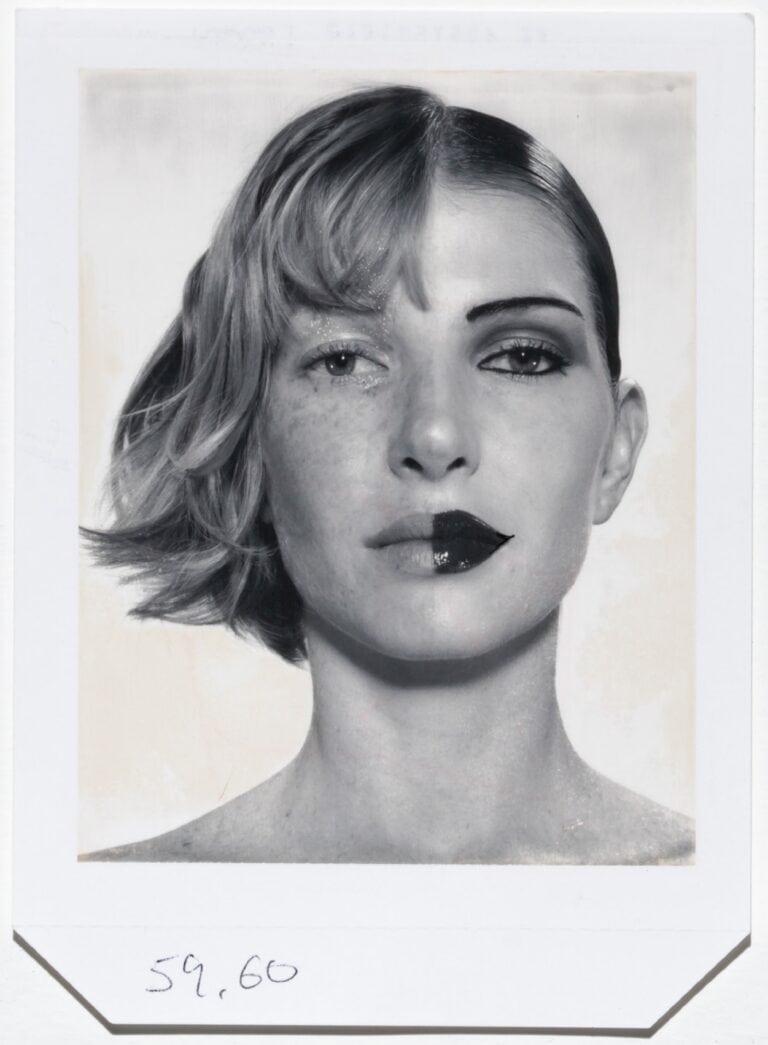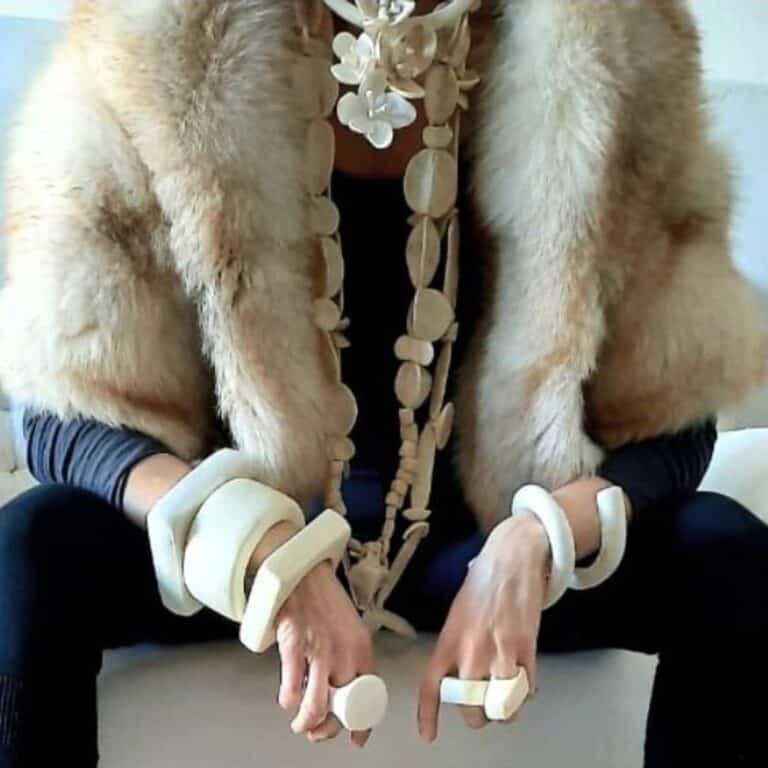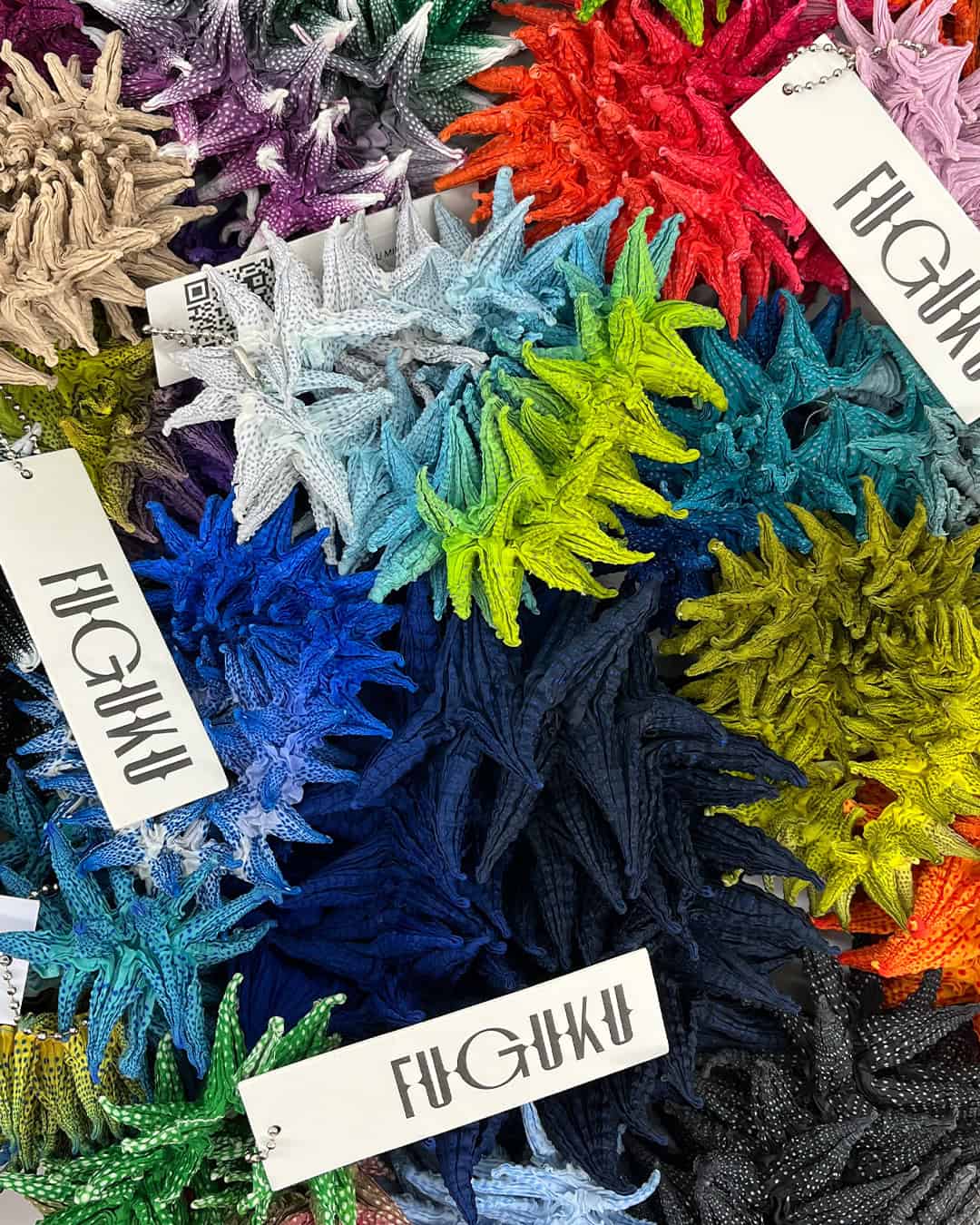
Meet Fuguku: The Brand Making Sustainability Look Sharp (Literally)
Agnese La Spisa
Some brands want to save the world and disrupt the industry. Some, like Fuguku, want to quietly take recycled plastic, centuries old crafting techniques, 70+ women artisans and a pufferfish. Then turn them into the most unexpectedly fabulous “spiky” bags you’ve ever seen.
Founded in 2023 by Savira Lavinia, Fuguku is what happens when deep cultural heritage meets big design imagination. It carries absolutely zero interest in doing things the boring way. It’s sustainable, yes, but also joyful, clever, and just a little bit mischievous, like the pufferfish (fugu) it’s named after.
Where Heritage Meets Innovation (and Gets a Textural Glow-Up)
Most brands look to traditions for inspiration. Fuguku looks at them and says, “Cute… but what if they were spikier?”
The answer lies in an unexpected cultural duet: Japanese Bai Shibori and Indonesian Jumputan. Fuguku didn’t simply copy either one. It hacked, adapted, and reinterpreted them. Bai Shibori, named after a type of shellfish because its form resembles its curved shell, traditionally uses two different methods. One involves an ito-ire stitching process before binding, and another without stitching at all. Jumputan, on the other hand, is a resist tie-dye technique from Sumatra and Java. It is called pelangi (“rainbow”) in Sumatra and kain kembangan (“flower cloth”) in Java for its vibrant, floral inspired colors.
Savira quickly recognized that Shibori and Jumputan weren’t just dyeing methods. They shared a rebellious, experimental spirit of manipulating fabric into something unexpected. Her breakthrough came when she developed a simplified Jumputan technique that produces Fuguku’s now signature sharp 3D spiky texture. This allows the brand to craft contemporary, sculptural silhouettes. It still honors the soul of handcrafted tradition. By applying this reinvented process to GRS-certified recycled materials, she shows that heritage isn’t something dusty or stuck in the past. It’s alive, adaptable, and boldly stepping into the future.
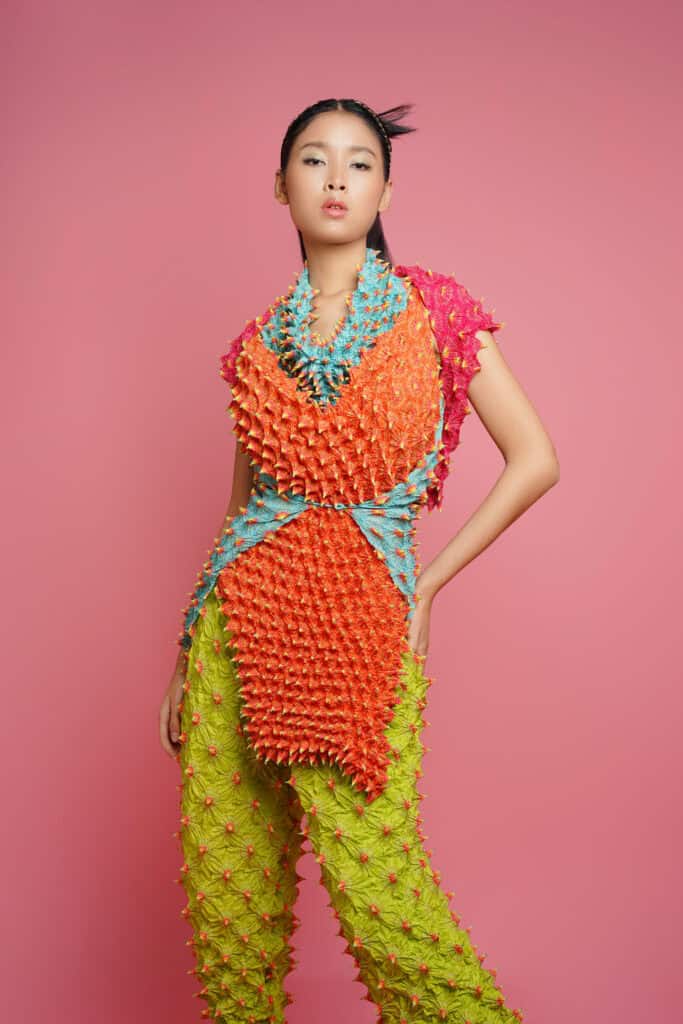
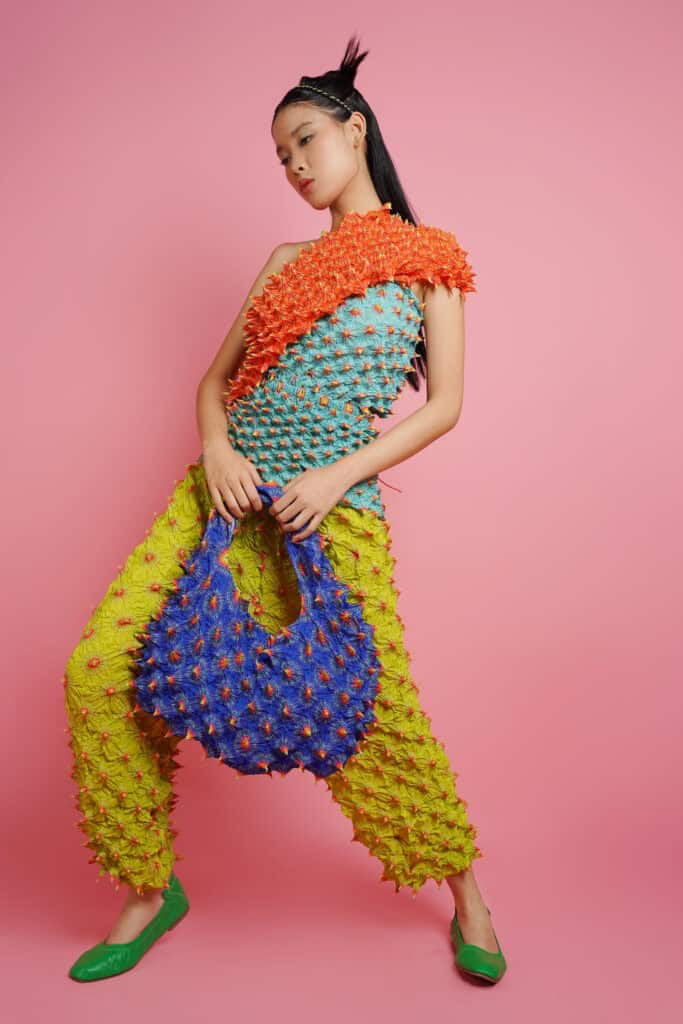
When a Pandemic Says “No,” Fuguku Says “Okay, New Plan!”
The spiky texture wasn’t born in a serene atelier. It was born in chaos: zoom calls, limited tools, and the realization that traditional Shibori is way too complicated when everyone’s stuck at home.
When Savira realized that traditional Shibori tools weren’t realistic for remote collaboration, she and her team dove into a full year of R&D. They invented a simplified Jumputan-based method. That breakthrough became a defining moment for Fuguku: the technique was easy for artisans to learn, beautifully compatible with the recycled plastic fabrics the brand champions, and flexible enough to scale. In many ways, the entire journey echoed the spirit of the pufferfish that inspired the brand’s name: resilient, adaptable, and just the right amount of unexpected.
Sustainability, But Make It Stylish
Forget beige eco minimalism. Fuguku’s version of sustainability is neon, textured, and bold enough to stop conversations mid sentence.
Fuguku’s use of GRS-certified recycled plastic doesn’t just check a sustainability box. It actively shapes the brand’s bold, durable aesthetic, infusing each piece with vibrant color and sculptural texture. The result is wearable art that wants nothing to do with fast fashion cycles. Environmentally, the brand diverts waste from landfills and oceans; socially, it empowers its artisans through flexible, dignified, fairly paid work. For Fuguku, sustainability isn’t a buzzword. It’s a constant balance of planet and people, always.


The Heart of Fuguku: 70+ Women, Needles and Unshakeable Spirit
Behind each spiky masterpiece is a community of Jakarta-area artisans, many of them women balancing family life, financial responsibilities, and now a newfound artistic skill.
Most of them are homemakers or beginners. Building this community has shown the founder just how much resilience and quiet strength these women carry. The technique itself was intentionally designed to be accessible to them, making their well-being inseparable from the brand’s creative success. Their meticulous work is what gives every Fuguku piece its unmistakable soul. And, of course, its spikes.
Wearable Art With a Personality (and a Bite)
To wear Fuguku is to wear something a little rebellious, a soft spoken statement of resilience with a very loud texture.
Still, the goal is for every design to radiate the same vibrant resilience as the pufferfish that inspired it: bold, quirky, and impossible to ignore. Each piece is created to empower the wearer, doubling as wearable art with attitude. And there’s a quiet bonus stitched into every spike: a reminder that your choice lifted artisans, supported their families, and helped the planet breathe a little easier.
It’s like buying a piece of clothing that says “thank you for making good choices” every time you pick it up.
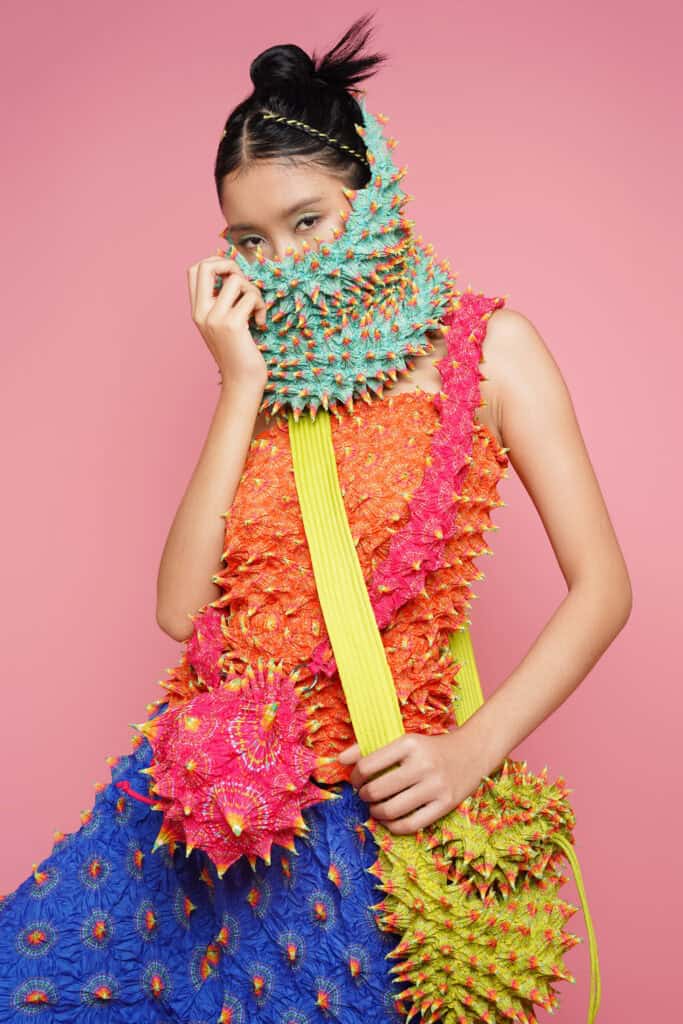
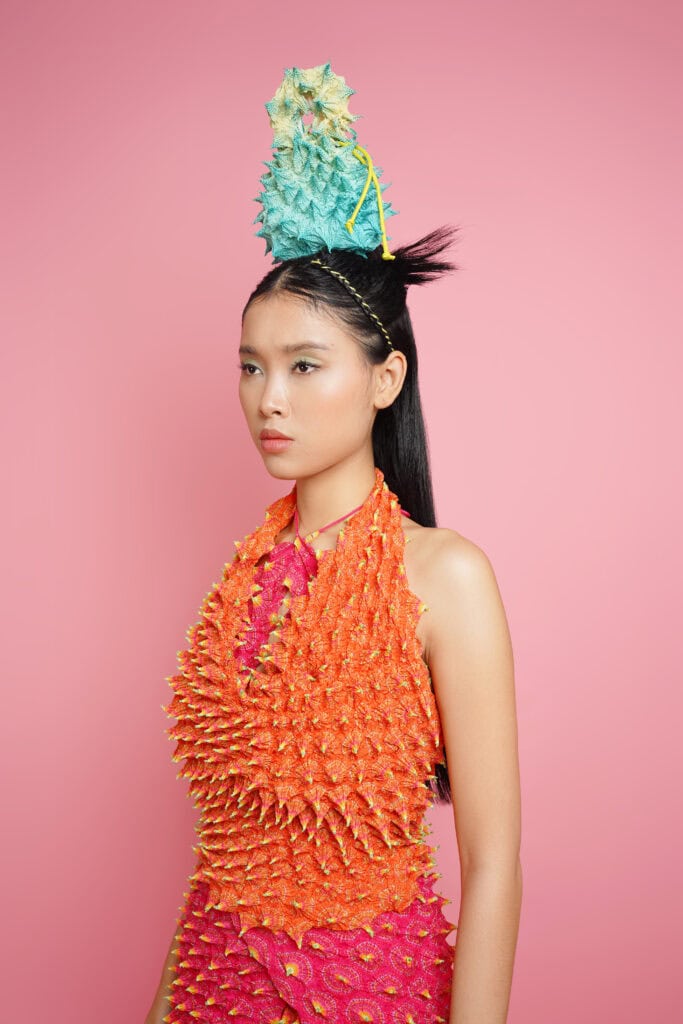
What’s Next? More Texture, More Art, More World Domination
Fuguku may be young, but its ambitions are global and bold.
The brand is now expanding its ready-to-wear collections and preparing to launch Fuguku Home. It brings its artistic, spiky sensibility into everyday living. Behind the scenes, the team continues researching new sustainable materials. They are pushing their signature texture into even more sculptural silhouettes. The brand is also diving deeper into global circular-economy collaborations, including a standout partnership with Parisian upcycling label 2 Mai. In case there was any doubt that Fuguku’s spikes have range, a recent acquisition by the Centre Pompidou confirmed it. The art world loves a good spiky bag just as much as the fashion crowd.
Fuguku isn’t here to preach sustainability. It’s here to prove that conscious fashion can be exciting, expressive, and bold. And if the pufferfish is any indication, Fuguku is just getting started.
Share this post
Agnese La Spisa is an Italian creative based in Italy, specializing in publishing and fashion communication. At IRK Magazine, she brings together creativity, research, and design to shape stories with clarity and style. Curious and collaborative, she is driven by a passion for exploring culture, aesthetics, and the narratives that connect people, ideas, and disciplines.
Read Next


